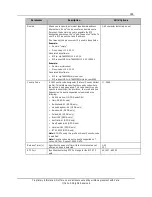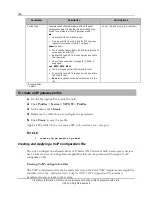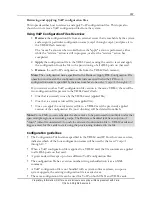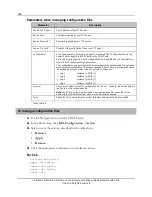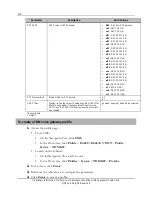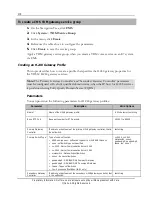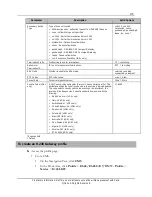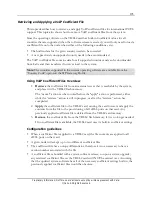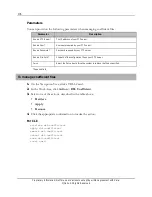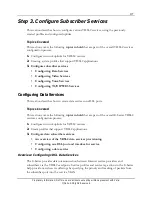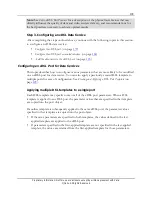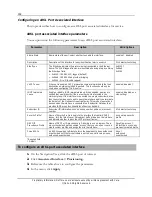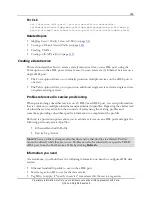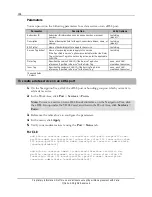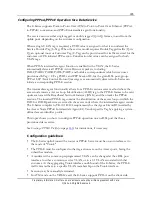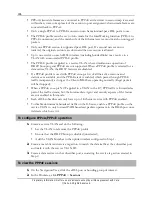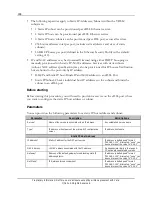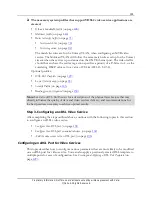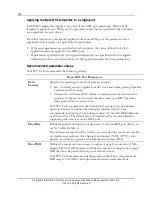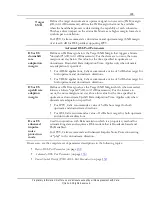
178
Proprietary Information: Not for use or disclosure except by written agreement with Calix.
© Calix. All Rights Reserved.
The Calix E-Series supports the following data service models over IP on VDSL2 card ports.
VLAN-per-Service:
where each service is assigned a dedicated VLAN where multiple
subscriber ports are assigned to the VLAN for a single service. This model is often
referred to as N:1.
VLAN-per-Port:
where each subscriber port is assigned a dedicated VLAN. This model
is often referred to as 1:1.
VLAN Stacking, Q-in-Q:
where a transparent LAN service on each port is configured
using VLAN double tagging.
Before starting
The port service provisioning options allow you to activate services on an xDSL port and
apply previously-created profiles. Before starting the data services configuration process,
ensure the following steps of the turn-up process have been completed:
1.
The network uplinks for VDSL2 services are configured.
Ethernet port interfaces
Ethernet ports
(on page
21
)
Service VLANs
VLAN memberships
(on page
64
)
Uplink interfaces (or ERPS domain, if the uplink resides on a different shelf) must be
added to the VLAN membership.
2.
The necessary system profiles that support VDSL2 data service applications are
created.
Ethernet bandwidth profile
(on page
105
)
Rules to classify traffic
(on page
71
)
Service match list
(on page
78
)
Service tag action
(on page
82
)
The data traffic should be set where the service tag action specifies a priority of a P-
bit set to 0, 1, 2, 3 or the correlating DSCP value set to a value of 0, CS1 & AF11-13
(8-14), CS2 & AF21-23 (16-22), CS3 & AF31-33 (24-30).
Optional profiles:
DSL Port Template
(on page
129
)
Layer 3 priority map
(on page
96
)
Security Profile
(on page
143
)
Bonding groups, if required
(on page
150
)


